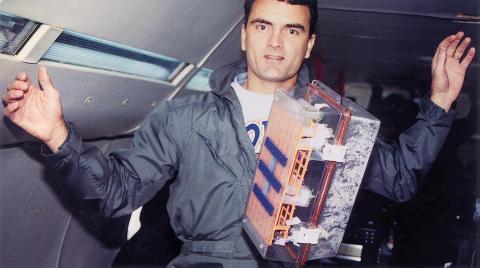Plant Growth Study IFAS' First Foray Into Space
University of Florida agricultural researchers are using a genetically engineered plant in a new growth facility to determine why plants don't reproduce well in space.The study by scientists Robert Ferl and Christine Daugherty is the first experiment by UF's Institute of Food and Agricultural Sciences to be conducted aboard the space shuttle.
``We're trying to get the plant to tell us if it's happy or it's not,'' Daugherty said. ``Microgravity is another environmental extreme, just like not enough water, light, flooding or high temperatures.''
Past research has shown that it has been difficult to reproduce a plant in weightless microgravity conditions like those aboard the space shuttle, said Daugherty of the Plant Molecular and Cellular Biology program.
``Plants growing in space don't seem to set seed or have viable fruit,'' said Ferl, who serves as project director. ``They'll flower but the seeds won't produce fruit.''
This could be a big problem on space stations or missions to places like Mars. Astronauts on these long missions would need to grow plants to supply food, Daugherty said. The space plants also could be used to filter wastewater, scrub carbon dioxide and provide some oxygen.
To understand what happens within the plants in space, Daugherty and Ferl have inserted a ``reporter'' gene into the Arabidopsis plant, a member of the mustard family that Daugherty calls ``the white mouse of the plant world.''
``The reporter genes detect how plants behave in a certain environment,'' Ferl said. ``The reporter gene product, for example, turns a colorless substrate inside the plant blue on an environmental cue such as low oxygen or cold shock.''
By monitoring the color changes, the scientists can observe and pinpoint specific stresses and adjust the plant's growing environment. The experiment is conducted in a 60-pound plant growth facility that NASA engineers designed and the IFAS scientists are testing. It will be stored in the shuttle's mid-deck area.
Andrea L. Billups

photo by: Robert Ferl
Aboard a NASA plane designed to simulate zero gravity, UF horticultural sciences Professor Robert Ferl demonstrates a plant growth facility that will be used aboard the space shuttle to study how plants react to weightlessness.